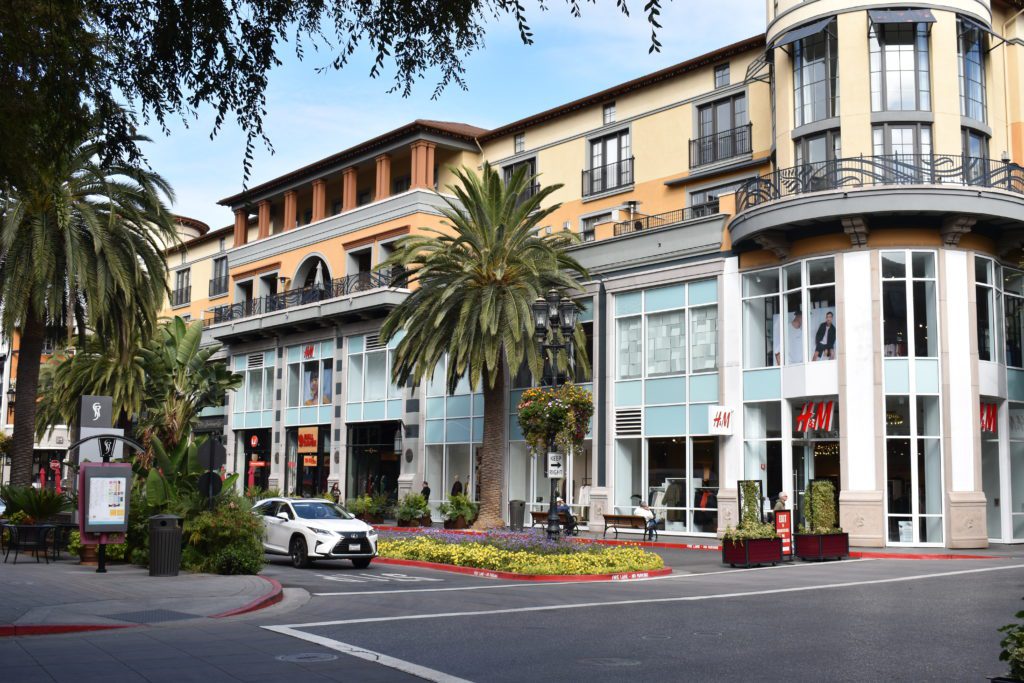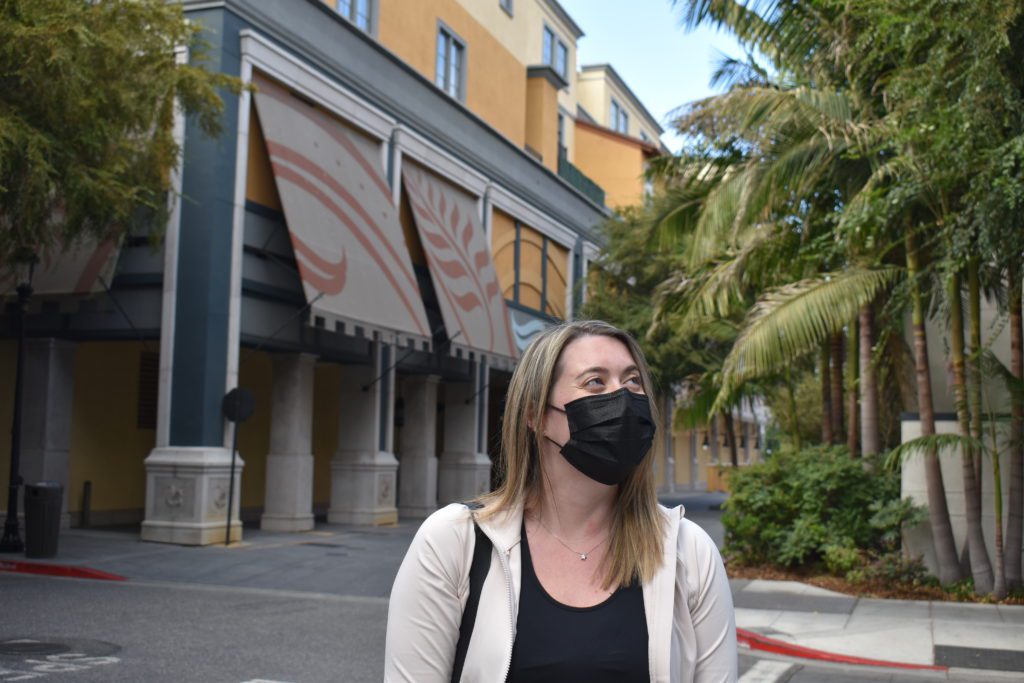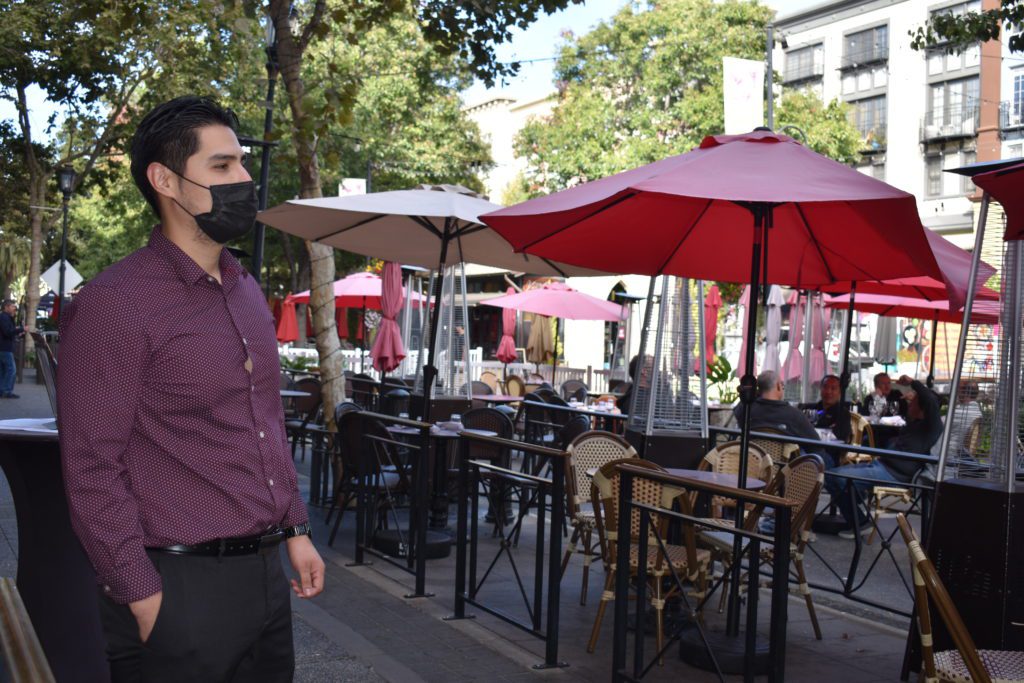With a lack of tech workers and foot traffic, downtown San Jose became a ghost town during the pandemic, but five miles away high-end Santana Row flourished.
These two destinations linked by San Carlos and Stevens Creek boulevards and Interstate 280 are worlds apart socioeconomically and the COVID-19 pandemic made that schism wider.
Downtown was hit incredibly hard by shelter-in-place mandates during the pandemic. Numerous businesses were unable to survive, leaving streets littered with empty restaurants and storefronts. Built more for office workers than retail shoppers, its restaurants and bars suffered as tech employees worked from home. Although Google promises to revitalize the city, and condos are being developed and BART is coming downtown, these are future endeavors and won’t resolve the downtown core’s immediate revitalization dilemma.


Meanwhile, Santana Row, a mixed-use development of retail, restaurants and housing — 834 high-end condominiums and rental units — bounced back quickly. The Row, which resembles a European city in design, extended its al fresco dining, reopened shops as soon as regulations permitted and remained busy through most of the pandemic. Additional plans include a pedestrian bridge across Winchester Blvd to future development where the former San Jose domed theaters once stood.


In Dec. 2020, Santana Row rang in the holidays with a Maker’s Market featuring handmade crafts, scavenger hunt, live music and snow, while ice skating at Downtown Ice was canceled and Christmas in the Park moved to a drive through event at Kelly Park.
“Santana Row is a well-designed and managed mixed-use environment without the grit, diversity or equity of downtown districts,” Scott Knies, executive director of the San Jose Downtown Association, told San Jose Spotlight.
Knies is happy to have San Jose State University students back and looks forward to business travelers, conventioneers and workers returning as the pandemic wanes.
Uphill road for downtown
The lack of patrons downtown took a toll on its economy. In September, Derrick Seaver, president of the San Jose Chamber of Commerce, said some businesses reported 70-80% of pre-pandemic revenue loss.
A shortage of workers was another challenge. Randy Musterer, owner of Sushi Confidential, lost student workers at his downtown site and found it hard to find enough staff to stay open, when San Jose State closed its campus.
Julian Yeo, owner of Straits restaurant at Santana Row faced the same problem, but came out of it far better. The Yeo family closed Sino, a dim sum and cocktail lounge on the Row, early in the pandemic due to staffing difficulties and the uncertainty of when they’d reopen. Straits currently has about 80% of its workforce and slightly more than half of its original staff, he said.
“The labor shortage is still very real,” Yeo said. “We saw the exodus of hospitality industry workers leaving the area.”
Straits was closed March through most of June 2020, before reopening with outdoor dining. When Yeo reopened, he had foot traffic and the patrons who lived in Santana Row village.
“Everybody was just waiting for us to open,” he said. “We had a line out the door. The only problem was we didn’t have enough staff… but now we’re okay.”
Yeo said downtown San Jose isn’t like San Francisco as it doesn’t offer the attraction of shopping and window browsing. He said the lack of parking and bathrooms is also a drawback.
Marcela Costa agrees. Costa, who enjoys wandering along Santana Row while pushing her son in his stroller, said it provides a place to socialize and relax during the pandemic. It is also safe and clean. “Everything just feels good coming here,” Costa said. “Sometimes you’re so overwhelmed and coming here is refreshing.”


But Kat Yandell, who moved to Santana Row from downtown six months ago, felt the Row had become too crowded and it made her uncomfortable during the pandemic. Yandell said service businesses suffered during the pandemic, with some being closed for more than a year, like W’s salon. When health guidelines permitted, she said, it moved its chairs outside and Lavande Nail Spa offered mani pedis on the street.
Yandell used to enjoy taking walks in downtown San Jose, but stopped due to the increased homeless population. Santana Row offers a better quality of nightlife and is a one-stop shop with dentistry, a pharmacy, salons and restaurants, she added.
“It’s all about community and service,” Yandell said.
Samantha Rodriguez, manager of Loft clothing in Santana Row said the store closed for a couple of months, but reopened as soon as it could. At times it reached capacity with lines out the door. Markings on the ground still separate customers at the register and masks are worn.
Rodriguez said the mixed-use combination of restaurants and shops provides variety while the Latin music from El Jardin puts a cheerful vibe in the air.


Nicolas Echeberria, manager of Left Bank, agreed. “Santana Row is like an adult theme park,” he said. “It’s a great place to be.”
Contact Lorraine Gabbert at [email protected].



Leave a Reply
You must be logged in to post a comment.